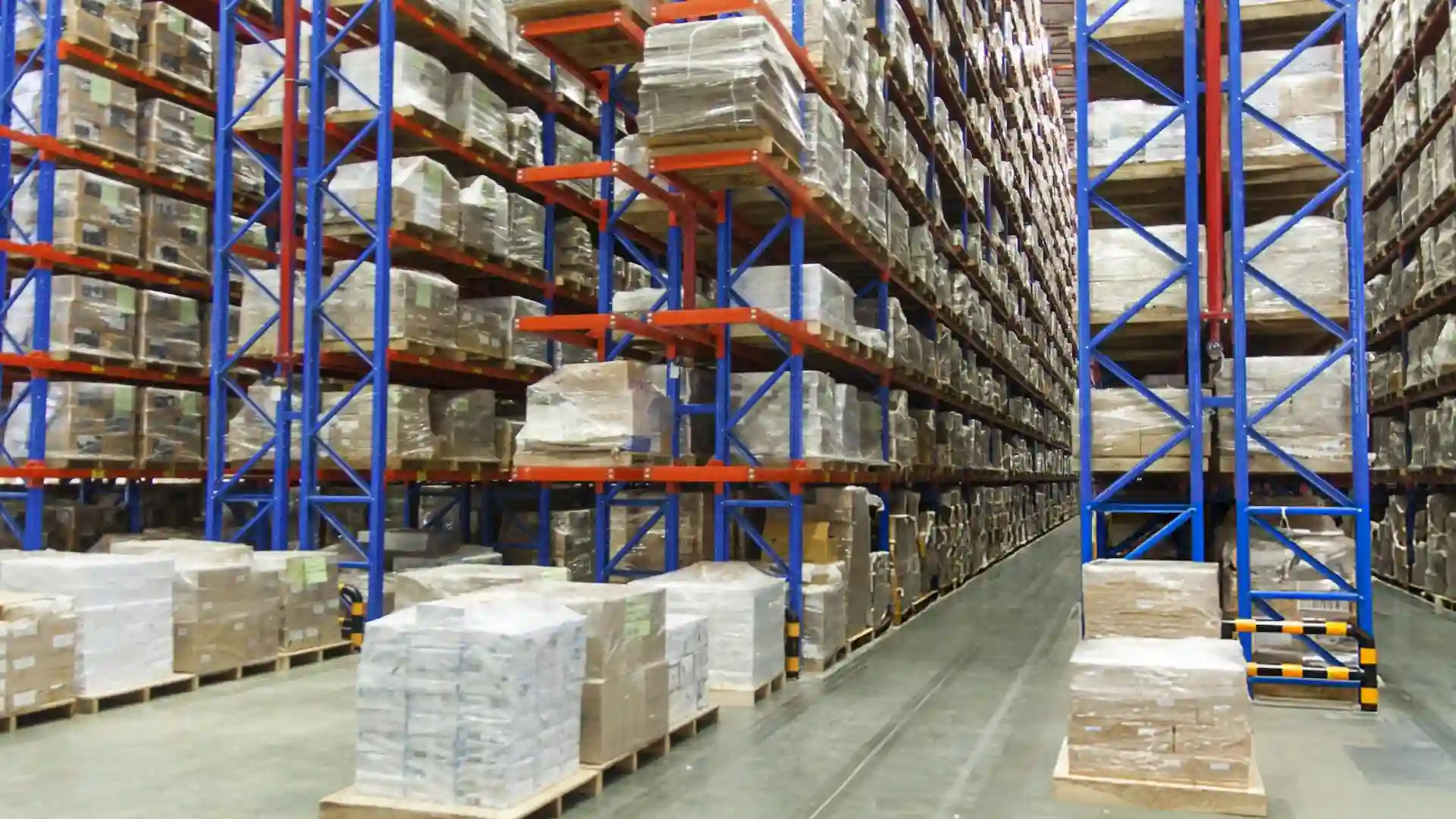Understanding Perpetual Inventory Systems: A Comprehensive Guide
.webp)
Inventory management is a crucial aspect of running a successful business. It directly affects operational efficiency and profitability. Among the various inventory management techniques, perpetual inventory systems stand out for their accuracy and real-time tracking capabilities.
In this blog post, we'll dive into the details of perpetual inventory systems, their benefits, and how they compare to physical inventory methods. We'll also explore the perpetual inventory method and its application in modern business settings.
What is a Perpetual Inventory System?
A perpetual inventory system is a method of tracking inventory that records sales and purchases in real-time using computerized systems and software. This continuous tracking ensures that inventory levels are always up-to-date, providing accurate data for better decision-making.
How Does a Perpetual Inventory System Work?
The perpetual inventory system updates inventory records immediately after a transaction occurs. Here’s a simplified process:
- Sales Transactions: When an item is sold, the system automatically updates the inventory count, deducting the sold quantity from the total stock.
- Purchase Transactions: When new stock arrives, the system adds the received quantity to the inventory count.
- Returns and Adjustments: Any returns or adjustments are recorded instantly, ensuring the inventory data remains accurate.
Benefits of Perpetual Inventory Systems
Adopting a perpetual inventory system offers numerous advantages:
Real-Time Inventory Tracking
The primary benefit of perpetual inventory systems is real-time tracking. Businesses can monitor inventory levels continuously, enabling more efficient stock management and reducing the risk of stockouts or overstocking.
Improved Accuracy
Since inventory data is updated immediately after each transaction, perpetual inventory systems significantly reduce errors associated with manual entry and periodic stock counts. This accuracy is crucial for financial reporting and operational planning.
Enhanced Decision-Making
With accurate, up-to-date inventory data at their fingertips, managers can make informed decisions regarding purchasing, pricing, and inventory management. This leads to better resource allocation and increased profitability.
Cost Efficiency
By minimizing errors and reducing the need for physical stock counts, perpetual inventory systems can lower operational costs. Additionally, better inventory management often results in reduced carrying costs and improved cash flow.
Perpetual Inventory Method
The perpetual inventory method involves maintaining a continuous record of inventory transactions. This method contrasts with periodic inventory systems, where inventory data is updated at specific intervals, often leading to discrepancies between actual and recorded stock levels.
Key Features of the Perpetual Inventory Method
- Continuous Updates: Inventory records are updated in real-time with every transaction.
- Automated Processes: Modern perpetual inventory systems leverage automation to track inventory, reducing the need for manual intervention.
- Integration with Other Systems: These systems often integrate with other business software, such as point-of-sale (POS) systems and accounting software, ensuring seamless data flow across the organization.
Perpetual Inventory vs. Physical Inventory
When discussing inventory management methods, it's essential to compare perpetual inventory systems with physical inventory methods.
Physical Inventory Method
The physical inventory method involves counting all inventory items at specific intervals, such as monthly, quarterly, or annually. This method provides a snapshot of inventory levels at a particular point in time.
Pros of Physical Inventory Method
- Simplicity: The process is straightforward and easy to understand.
- Verification: Physical counts can verify the accuracy of inventory records.
Cons of Physical Inventory Method
- Time-Consuming: Physical counts can be labor-intensive and time-consuming.
- Discrepancies: There is a higher chance of discrepancies between actual and recorded inventory levels, leading to potential stock issues.
- Interruptions: The need to halt operations during stock counts can disrupt business activities.
Perpetual Inventory Method
In contrast, the perpetual inventory method continuously updates inventory records, providing several distinct advantages over the physical inventory method.
Pros of Perpetual Inventory Method
- Accuracy: Real-time updates ensure inventory records are always accurate.
- Efficiency: Automation reduces the need for manual stock counts and minimizes errors.
- Operational Continuity: There’s no need to pause operations for stock counts, allowing businesses to function smoothly.
Cons of Perpetual Inventory Method
- Initial Setup Cost: Implementing a perpetual inventory system can involve a higher initial investment in technology and training.
- Complexity: The system requires regular maintenance and may be more complex to manage than periodic methods.
How Perpetual Inventory Systems Work with Ecommerce
Perpetual inventory systems are particularly beneficial for ecommerce businesses. Here’s how they integrate and enhance ecommerce operations:
Real-Time Synchronization
One of the standout features of perpetual inventory systems is real-time synchronization. For ecommerce businesses, this means inventory levels are always current across all sales channels, including your website, third-party marketplaces like Amazon and eBay, and even physical stores. This synchronization helps prevent overselling, reduces backorders, and improves customer satisfaction by ensuring that stock availability is accurate.
Automation and Efficiency
Perpetual inventory systems automate many aspects of inventory management, such as order processing, stock level updates, and inventory replenishment. This automation reduces the need for manual entry and oversight, freeing up valuable time for ecommerce business owners and employees to focus on other critical areas like marketing and customer service.
Data-Driven Decision Making
With perpetual inventory systems, ecommerce businesses have access to detailed, real-time data on sales, inventory levels, and customer behavior. This data can be used to make informed decisions about which products to stock, pricing strategies, and marketing campaigns. For instance, if a particular product is selling quickly, the system can trigger automatic reorders to ensure continuous availability.
Integration with Other Systems
Perpetual inventory systems often integrate seamlessly with other ecommerce tools such as customer relationship management (CRM) systems, accounting software, and point-of-sale (POS) systems. This integration ensures that all aspects of the business are aligned, from inventory management to customer service and financial tracking.
Customer Experience
In the competitive world of ecommerce, customer experience is paramount. Perpetual inventory systems help improve the customer experience by ensuring that product availability information is accurate, orders are fulfilled promptly, and customers receive timely updates on their purchases. This reliability builds trust and encourages repeat business.
Reducing Stockouts and Overstocking
Effective inventory management is about balance. Overstocking ties up capital and storage space, while stockouts can lead to missed sales opportunities and dissatisfied customers. Perpetual inventory systems help ecommerce businesses strike the right balance by providing accurate, real-time data that informs purchasing decisions. This balance leads to optimized stock levels and better cash flow management.
Handling Returns Efficiently
Returns are a common aspect of ecommerce. Perpetual inventory systems track returns in real-time, updating inventory levels immediately when a return is processed. This prompt updating ensures that returned items are quickly made available for resale, reducing the impact of returns on inventory levels and sales.
Common Challenges and Solutions
While perpetual inventory systems offer many benefits, they also come with challenges. Here are some common issues and their solutions:
Data Accuracy
Challenge: Ensuring data accuracy can be difficult, especially if the system relies on manual input for some transactions.
Solution: Implement barcode scanning and RFID technology to automate data entry and reduce errors. Regular audits and spot checks can also help maintain accuracy.
System Integration
Challenge: Integrating the perpetual inventory system with existing software can be complex and time-consuming.
Solution: Choose a system with robust integration capabilities and work with IT professionals to ensure a smooth integration process. It’s also beneficial to select software that offers excellent customer support and training resources.
Initial Costs
Challenge: The initial investment in technology and training can be high.
Solution: Consider the long-term benefits and potential cost savings of improved inventory management. Look for scalable solutions that fit your budget and start with a pilot program to manage initial costs.
Conclusion
Perpetual inventory systems streamline the way businesses manage their inventory by providing real-time tracking and accurate data. While the initial setup may require a significant investment, the long-term benefits of improved accuracy, efficiency, and decision-making far outweigh the costs. By understanding the perpetual inventory method and its advantages over physical inventory methods, businesses can make informed choices to optimize their inventory management processes.
Ready to transform your ecommerce inventory management? Contact Atomix Logistics today to learn more about our advanced inventory capabilities and how we can help streamline your operations. Let us show you the benefits of a perpetual inventory system tailored to your business needs. Reach out today and take the first step towards more efficient and profitable inventory management!
Frequently Asked Questions (FAQs) about Perpetual Inventory Systems
What is a Perpetual Inventory System?
A perpetual inventory system continuously tracks inventory levels in real-time using computerized systems. Unlike periodic inventory systems, which update inventory records at specific intervals, perpetual inventory systems record every sale and purchase immediately, ensuring accurate and up-to-date inventory data.
How Does the Perpetual Inventory Method Improve Accuracy?
The perpetual inventory method improves accuracy by updating inventory records instantly after each transaction. This real-time tracking minimizes errors associated with manual entry and periodic stock counts, leading to more reliable inventory data for better decision-making and financial reporting.
What are the Main Benefits of Using a Perpetual Inventory System?
The main benefits of using a perpetual inventory system include real-time inventory tracking, improved accuracy, enhanced decision-making capabilities, and cost efficiency. By providing up-to-date inventory data, businesses can reduce stockouts, avoid overstocking, and optimize their inventory management processes.
How Do Perpetual Inventory Systems Compare to Physical Inventory Methods?
Perpetual inventory systems offer several advantages over physical inventory methods. While physical inventory methods involve periodic stock counts that can be time-consuming and disruptive, perpetual inventory systems provide continuous, real-time updates, ensuring more accurate and efficient inventory management. However, perpetual systems may require a higher initial investment in technology and training.
What Factors Should I Consider When Implementing a Perpetual Inventory System?
When implementing a perpetual inventory system, consider factors such as your business size, the volume of transactions, integration capabilities with existing systems, and the level of automation required. Choose a user-friendly software solution that fits your budget and provides the necessary features for your inventory management needs. Proper training and regular monitoring are also essential to ensure the system’s effectiveness.

.svg)
.svg)
.svg)




